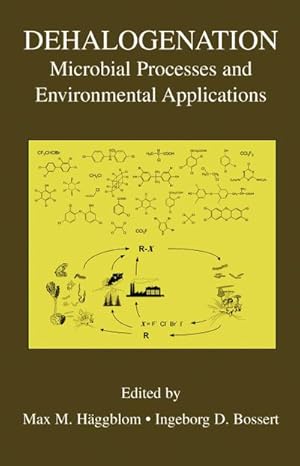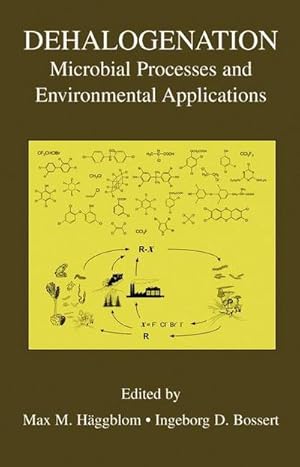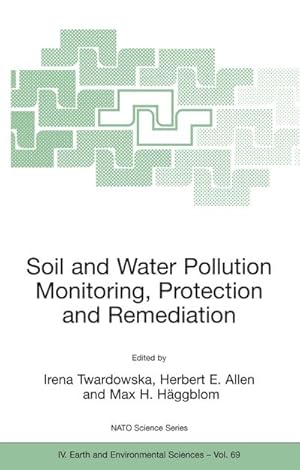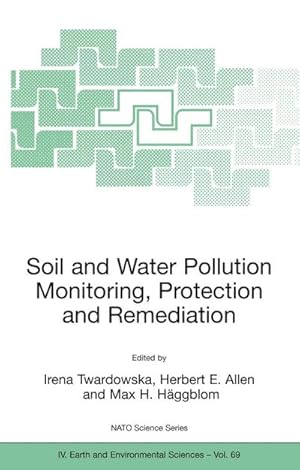häggblom max (11 Ergebnisse)
Suchfilter
Produktart
- Alle Product Types
- Bücher (11)
- Magazine & Zeitschriften (Keine weiteren Ergebnisse entsprechen dieser Verfeinerung)
- Comics (Keine weiteren Ergebnisse entsprechen dieser Verfeinerung)
- Noten (Keine weiteren Ergebnisse entsprechen dieser Verfeinerung)
- Kunst, Grafik & Poster (Keine weiteren Ergebnisse entsprechen dieser Verfeinerung)
- Fotografien (Keine weiteren Ergebnisse entsprechen dieser Verfeinerung)
- Karten (Keine weiteren Ergebnisse entsprechen dieser Verfeinerung)
- Manuskripte & Papierantiquitäten (Keine weiteren Ergebnisse entsprechen dieser Verfeinerung)
Zustand Mehr dazu
- Neu (10)
- Wie Neu, Sehr Gut oder Gut Bis Sehr Gut (1)
- Gut oder Befriedigend (Keine weiteren Ergebnisse entsprechen dieser Verfeinerung)
- Ausreichend oder Schlecht (Keine weiteren Ergebnisse entsprechen dieser Verfeinerung)
- Wie beschrieben (Keine weiteren Ergebnisse entsprechen dieser Verfeinerung)
Einband
Weitere Eigenschaften
- Erstausgabe (Keine weiteren Ergebnisse entsprechen dieser Verfeinerung)
- Signiert (Keine weiteren Ergebnisse entsprechen dieser Verfeinerung)
- Schutzumschlag (Keine weiteren Ergebnisse entsprechen dieser Verfeinerung)
- Angebotsfoto (8)
Sprache (1)
Preis
- Beliebiger Preis
- Weniger als EUR 20 (Keine weiteren Ergebnisse entsprechen dieser Verfeinerung)
- EUR 20 bis EUR 45 (Keine weiteren Ergebnisse entsprechen dieser Verfeinerung)
- Mehr als EUR 45
Gratisversand
- Kostenloser Versand nach USA (Keine weiteren Ergebnisse entsprechen dieser Verfeinerung)
Land des Verkäufers
Verkäuferbewertung
-
Dehalogenation | Microbial Processes and Environmental Applications
Anbieter: preigu, Osnabrück, Deutschland
Taschenbuch. Zustand: Neu. Dehalogenation | Microbial Processes and Environmental Applications | Ingeborg D. Bossert (u. a.) | Taschenbuch | xii | Englisch | 2013 | Springer US | EAN 9781475778076 | Verantwortliche Person für die EU: Springer Verlag GmbH, Tiergartenstr. 17, 69121 Heidelberg, juergen[dot]hartmann[at]springer[dot]com | Anbieter: preigu.
-
Dehalogenation
Verlag: Springer US, Springer US Apr 2003, 2003
ISBN 10: 1402074069 ISBN 13: 9781402074066
Sprache: Englisch
Anbieter: buchversandmimpf2000, Emtmannsberg, BAYE, Deutschland
Buch. Zustand: Neu. Neuware -Halogenated organic compounds constitute one of the largest groups of environmental chemicals. The industrial production of new halogenated organic compounds has increased throughout the last century peaking in the 1960s, and continuing in widespread use today. Organohalides are integral to a variety of industrial applications, including use as solvents, degreasing agents, biocides, pharmaceuticals, plasticizers, hydraulic and heat transfer fluids, and intermediates for chemical synthesis, to name a few. It is important to recognize the beneficial aspects of halogenated organic compounds, as well as their potentially deleterious impact on the environment and health. Recognition ofthe adverse environmental effects ofmanytypes oforganohalide compounds has led to efforts to reduce or eliminate the most problematic ones. Although organohalide compounds are typically considered to be anthropogenic industrial compounds, they have their counterpart in several thousands of natural biogenic and geogenic organohalides, representing most classes of organic chemicals. Natural sources account for a significant portion of the global organohalogen budget. This volume authored by recognized experts in the field provides a current perspective on how both natural and synthetic organohalides are formed and degraded, and how these processes are incorporated into a global halogen cycle. The focus is on microbial processes, since these play a major role both in the production and degradation, i. e. , cycling of halogenated organic compounds inthe environment. This book is organized into five parts. Part I, Introduction, provides a global perspective on the issues of organohalides and their fate in the environment.Springer Verlag GmbH, Tiergartenstr. 17, 69121 Heidelberg 518 pp. Englisch.
-
Dehalogenation : Microbial Processes and Environmental Applications
Anbieter: AHA-BUCH GmbH, Einbeck, Deutschland
Taschenbuch. Zustand: Neu. Druck auf Anfrage Neuware - Printed after ordering - Halogenated organic compounds constitute one of the largest groups of environmental chemicals. The industrial production of new halogenated organic compounds has increased throughout the last century peaking in the 1960s, and continuing in widespread use today. Organohalides are integral to a variety of industrial applications, including use as solvents, degreasing agents, biocides, pharmaceuticals, plasticizers, hydraulic and heat transfer fluids, and intermediates for chemical synthesis, to name a few. It is important to recognize the beneficial aspects of halogenated organic compounds, as well as their potentially deleterious impact on the environment and health. Recognition ofthe adverse environmental effects ofmanytypes oforganohalide compounds has led to efforts to reduce or eliminate the most problematic ones. Although organohalide compounds are typically considered to be anthropogenic industrial compounds, they have their counterpart in several thousands of natural biogenic and geogenic organohalides, representing most classes of organic chemicals. Natural sources account for a significant portion of the global organohalogen budget. This volume authored by recognized experts in the field provides a current perspective on how both natural and synthetic organohalides are formed and degraded, and how these processes are incorporated into a global halogen cycle. The focus is on microbial processes, since these play a major role both in the production and degradation, i. e. , cycling of halogenated organic compounds inthe environment. This book is organized into five parts. Part I, Introduction, provides a global perspective on the issues of organohalides and their fate in the environment.
-
Dehalogenation : Microbial Processes and Environmental Applications
Anbieter: AHA-BUCH GmbH, Einbeck, Deutschland
Buch. Zustand: Neu. Druck auf Anfrage Neuware - Printed after ordering - Halogenated organic compounds constitute one of the largest groups of environmental chemicals. The industrial production of new halogenated organic compounds has increased throughout the last century peaking in the 1960s, and continuing in widespread use today. Organohalides are integral to a variety of industrial applications, including use as solvents, degreasing agents, biocides, pharmaceuticals, plasticizers, hydraulic and heat transfer fluids, and intermediates for chemical synthesis, to name a few. It is important to recognize the beneficial aspects of halogenated organic compounds, as well as their potentially deleterious impact on the environment and health. Recognition ofthe adverse environmental effects ofmanytypes oforganohalide compounds has led to efforts to reduce or eliminate the most problematic ones. Although organohalide compounds are typically considered to be anthropogenic industrial compounds, they have their counterpart in several thousands of natural biogenic and geogenic organohalides, representing most classes of organic chemicals. Natural sources account for a significant portion of the global organohalogen budget. This volume authored by recognized experts in the field provides a current perspective on how both natural and synthetic organohalides are formed and degraded, and how these processes are incorporated into a global halogen cycle. The focus is on microbial processes, since these play a major role both in the production and degradation, i. e. , cycling of halogenated organic compounds inthe environment. This book is organized into five parts. Part I, Introduction, provides a global perspective on the issues of organohalides and their fate in the environment.
-
Dehalogenation: Microbial Processes and Environmental Applications
Anbieter: Revaluation Books, Exeter, Vereinigtes Königreich
EUR 238,43
EUR 14,23 für den Versand von Vereinigtes Königreich nach USAAnzahl: 2 verfügbar
In den WarenkorbPaperback. Zustand: Brand New. 514 pages. 9.25x6.10x1.17 inches. In Stock.
-
Soil and Water Pollution Monitoring, Protection and Remediation
Anbieter: preigu, Osnabrück, Deutschland
Taschenbuch. Zustand: Neu. Soil and Water Pollution Monitoring, Protection and Remediation | Irena Twardowska (u. a.) | Taschenbuch | xxxiv | Englisch | 2007 | Springer | EAN 9781402047275 | Verantwortliche Person für die EU: Springer Verlag GmbH, Tiergartenstr. 17, 69121 Heidelberg, juergen[dot]hartmann[at]springer[dot]com | Anbieter: preigu.
-
Dehalogenation
Verlag: Kluwer Academic Publishers, 2003
ISBN 10: 1402074069 ISBN 13: 9781402074066
Sprache: Englisch
Anbieter: Kennys Bookstore, Olney, MD, USA
Zustand: New. Provides a fresh perspective on how both natural and synthetic organohalides are formed and degraded, and the incorporation of the processes into a global halogen cycle. This book explores the diversity of dehalogenating microorganisms, their ecology, biochemistry, genetics, and reviews the range of biologically-mediated dehalogenation mechanisms. Editor(s): Haggblom, Max M.; Bossert, Ingeborg D. Num Pages: 502 pages, biography. BIC Classification: RN; TQK. Category: (P) Professional & Vocational; (UP) Postgraduate, Research & Scholarly; (UU) Undergraduate. Dimension: 234 x 156 x 28. Weight in Grams: 901. . 2003. Hardback. . . . . Books ship from the US and Ireland.
-
Soil and Water Pollution Monitoring, Protection and Remediation
Anbieter: Buchpark, Trebbin, Deutschland
Zustand: Sehr gut. Zustand: Sehr gut | Sprache: Englisch | Produktart: Bücher.
-
Soil and Water Pollution Monitoring, Protection and Remediation
Verlag: Springer Netherlands, Springer Netherlands Jan 2007, 2007
ISBN 10: 1402047274 ISBN 13: 9781402047275
Sprache: Englisch
Anbieter: buchversandmimpf2000, Emtmannsberg, BAYE, Deutschland
Taschenbuch. Zustand: Neu. Neuware -In every respect, human development and human security are closely linked to the productivity of ecosystems. Our future rests squarely on their continued viability. UNDP, UNEP, World Bank, World Resources Institute: World Resources 2000- 2001. People and Ecosystems. The Fraying Web of Life. 1. OBJECTIVE OF THE BOOK Soil, surface waters/sediments and shallow unprotected groundwater aquifers are interrelated compartments of the environment that are particularly easy to compromise, sensitive to short- and long-term pollution and directly affect sustainability of ecosystems and human health. Routine human activity such as application of fertilizers and pesticides in agriculture and forestry, or wet and dry deposition of atmospheric pollutants emitted from industrial plants, waste disposal and other practices adversely affect soil and water quality that already increasingly suffers from mismanagement in many areas. The predominant sources of pollution result in non-point contamination that is particularly difficult to reduce and control. Wars, accidents and natural emergency cases such as catastrophic floods that occur partly due to anthropogenically disturbed global water balance also add to overall increase of diverse contaminant loads in soil and water. Beneficial properties of some bulk waste materials such as biosolids (sewage sludge), biowaste (e. g. municipal waste composts) or fly ash from coal combustion xi xii Preface encourage applying these waste to land as a source of nutrients and organic matter, or as a soil amendment.Springer Verlag GmbH, Tiergartenstr. 17, 69121 Heidelberg 664 pp. Englisch.
-
Soil and Water Pollution Monitoring, Protection and Remediation
Anbieter: AHA-BUCH GmbH, Einbeck, Deutschland
Taschenbuch. Zustand: Neu. Druck auf Anfrage Neuware - Printed after ordering - In every respect, human development and human security are closely linked to the productivity of ecosystems. Our future rests squarely on their continued viability. UNDP, UNEP, World Bank, World Resources Institute: World Resources 2000- 2001. People and Ecosystems. The Fraying Web of Life. 1. OBJECTIVE OF THE BOOK Soil, surface waters/sediments and shallow unprotected groundwater aquifers are interrelated compartments of the environment that are particularly easy to compromise, sensitive to short- and long-term pollution and directly affect sustainability of ecosystems and human health. Routine human activity such as application of fertilizers and pesticides in agriculture and forestry, or wet and dry deposition of atmospheric pollutants emitted from industrial plants, waste disposal and other practices adversely affect soil and water quality that already increasingly suffers from mismanagement in many areas. The predominant sources of pollution result in non-point contamination that is particularly difficult to reduce and control. Wars, accidents and natural emergency cases such as catastrophic floods that occur partly due to anthropogenically disturbed global water balance also add to overall increase of diverse contaminant loads in soil and water. Beneficial properties of some bulk waste materials such as biosolids (sewage sludge), biowaste (e. g. municipal waste composts) or fly ash from coal combustion xi xii Preface encourage applying these waste to land as a source of nutrients and organic matter, or as a soil amendment.
-
Soil and Water Pollution Monitoring, Protection and Remediation
Anbieter: AHA-BUCH GmbH, Einbeck, Deutschland
Buch. Zustand: Neu. Druck auf Anfrage Neuware - Printed after ordering - In every respect, human development and human security are closely linked to the productivity of ecosystems. Our future rests squarely on their continued viability. UNDP, UNEP, World Bank, World Resources Institute: World Resources 2000- 2001. People and Ecosystems. The Fraying Web of Life. 1. OBJECTIVE OF THE BOOK Soil, surface waters/sediments and shallow unprotected groundwater aquifers are interrelated compartments of the environment that are particularly easy to compromise, sensitive to short- and long-term pollution and directly affect sustainability of ecosystems and human health. Routine human activity such as application of fertilizers and pesticides in agriculture and forestry, or wet and dry deposition of atmospheric pollutants emitted from industrial plants, waste disposal and other practices adversely affect soil and water quality that already increasingly suffers from mismanagement in many areas. The predominant sources of pollution result in non-point contamination that is particularly difficult to reduce and control. Wars, accidents and natural emergency cases such as catastrophic floods that occur partly due to anthropogenically disturbed global water balance also add to overall increase of diverse contaminant loads in soil and water. Beneficial properties of some bulk waste materials such as biosolids (sewage sludge), biowaste (e. g. municipal waste composts) or fly ash from coal combustion xi xii Preface encourage applying these waste to land as a source of nutrients and organic matter, or as a soil amendment.












